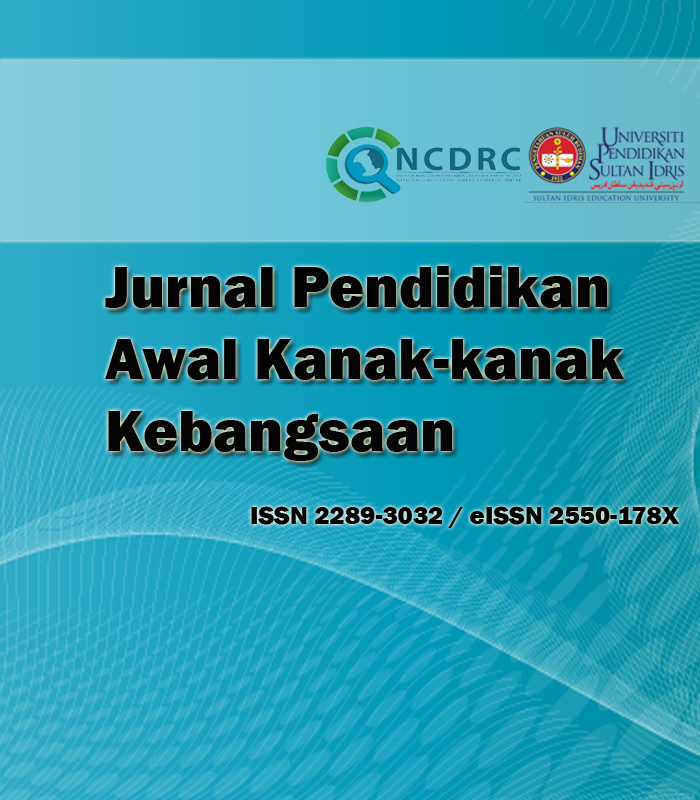Effectiveness of Using Early Reading Book to Improve Emergent Literature for Children with Dyslexia
DOI:
https://doi.org/10.37134/jpak.vol12.1.8.2023Keywords:
Dyslexia children, Early Literacy, Reading Books, Learning Disabilities, KindergartenAbstract
Dyslexia is a learning disability in children who have problems in written, spoken, expressive or receptive language. The most appropriate stimulation for dyslexia children is to provide an interesting and fun way of learning, especially because their age is still in the category of early childhood. The right stimulation can help dyslexia children solve their problems. Reading books that are fun will really help dyslexia children in learning to read. The purpose of this research is to create an interesting and fun learning media innovation, especially for dyslexia children to improve their early literacy skills. This reading book makes dyslexia children learn in their own way. This study uses the one group pre-posttest experimental technique, which is an approach that gives treatment to one research group, then the results will be calculated the difference. The number of research samples was 10 people, with dyslexia characteristics in the moderate category. The treatment used is to provide treatment in the form of reading exercises using reading books for dyslexia children. The significant value is 0.000 <0.05, meaning that there is a difference between before and after using reading books. The results of this study were dyslexia children who learned to use exercise books specifically designed for dyslexic children were quite effective, where they recognized letters more quickly and were able to read simple words. This study provides a very good improvement in reading skills in dyslexia children.
Downloads
References
Alwasilah, A. C. (2012). Pokoknya rekayasa literasi. Bandung: PT Kiblat Buku Utama.
Bingham, G.E.,&Patton-Terry,N. (2013). Early language and literacy achievement of early reading first student in kindergarten and 1st grade in the United State. Journal of Research in Childhood education, 27(4), 440-453. Doi:10.1080/02568543.2013.822952.
Bishop,A,.Yopp, R.H.,& Yopp,H.K. (2000). Ready for reading; a handbook for parents of pre-schooler. Needham Heights: Allyn & Bacon.
Beaty, J.J & Pratt, L. (2007). Early literacy in preschool and kindergarten a multicultural perspective (2nd ed). Ohio: Merrill Prentice Hall
Chen, C-M & Wu, C-H (2015). Effect of different video lecture types on sustained attention, emotion, cognitive load and learning performance. Computer & education, 80, 108-121.
Cullingford, C. (2013). How children learn to read and how to help them. Routledge.
Djamarah. (2010). Strategi Belajar Mengajar. Jakarta: rineka Cipta.
Ford, K. (2010). Language and literacy development for English language learner in preschool. In M.McKenna, S.walpole, & K.Conradi (Eds.), Promoting early reading. Reasearch, resources and best practices (pp.37-58). New York: The Guilford Press.
Gardner, H. (1983). Frames of mind: The Theory of Multiple Intellgences. New York: Basic books.
Gardner, H. (1999). The diciplined mind: what all students should understand. New York: Simon & Schuster.
Kharizmi, M. (2015). Kesulitan siswa sekolah dasar dalam meningkatkan kemampuan literasi. JUPENDAS. (2) 2, 13.
Lonigan, C. J., Shanahan, T., & Cunningham, A. (2008). Impact of shared reading interventions on young childrens early literacy skills. In Developing early literacy: report of the National Early literacy panel (pp. 153-171). Dimuat di daripada http://lincs.ed.gov/publications/pdf/NELPSummary.pdf.
Santrock, J.W. 2007. Perkembangan Anak 2. Alih bahasa oleh Mila Rahmawati. Jakarta : Erlangga.
Snow, C. E., & Juel, C. (2005). Teaching children to read: What do we know about how to do it.
Sugiyono. (2017). Metode penelitian kuantitatif, kualitatif, dan r&d. Bandung: Alfabeta.
Susanto, A. (2011). Perkembangan anak usia dini: pengantar dalam berbagai aspeknya. Jakarta: Kencana Prenada Media Group.
Takacs, Z.K, Swart, E.K, & Bus, A.G (2015). Benefit and pitfalls of multimedia and interactive features in technology- enhanced storybooks: A meta-analysis. Review of educational research, 85 (4), 698-739.
Toharudin, dkk. (2011). Membangun literasi sains peserta didik. Bandung: Humaniora.
Whitehurst, G & Lonigan, C. (1998). Child development and emergent literacy. Child development, 69 (3), 848-872.
Whitehurst, G. J. & Lonigan, C. J. (2001). Emergent literacy: development from prereaders to reader. Dalam S. B. Neuman & Dickinson (eds), Handbook of early literacy research (pp. 11-28). New York: Guilford Press.
Winataputra, Udin S. dkk. 2014. Teori Belajar dan Pembelajaran. Jakarta: Universitas Terbuka
Downloads
Published
How to Cite
Issue
Section
License
Copyright (c) 2023 Maria Ulfa Hasballah, Eng Hock Kway, Nur Hasmalawati

This work is licensed under a Creative Commons Attribution-NonCommercial-ShareAlike 4.0 International License.





